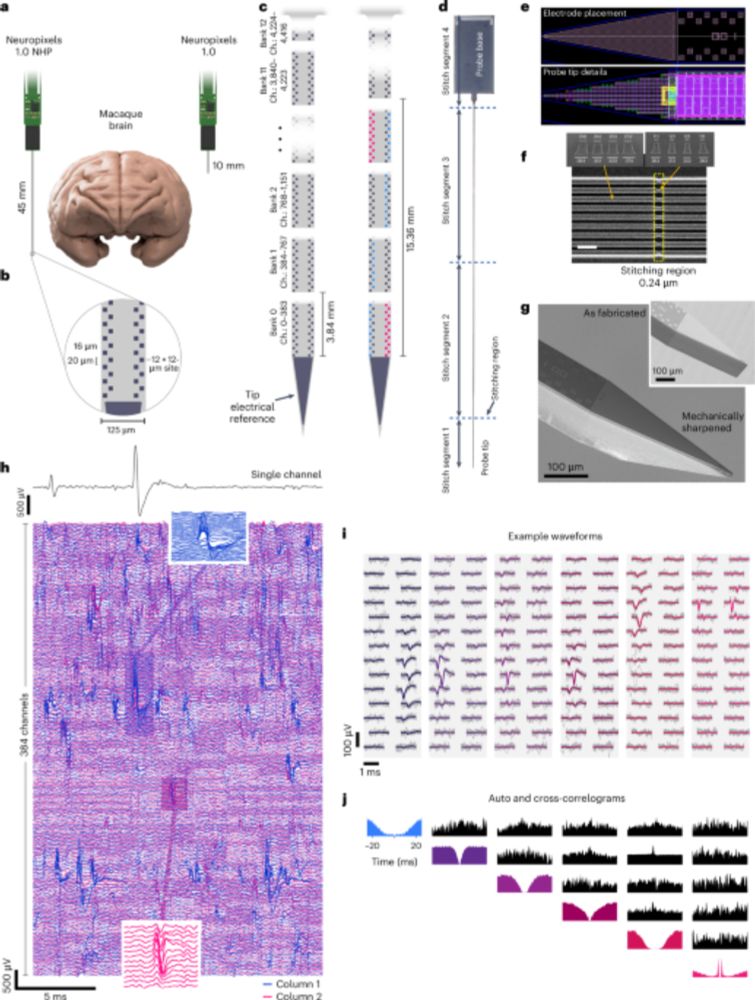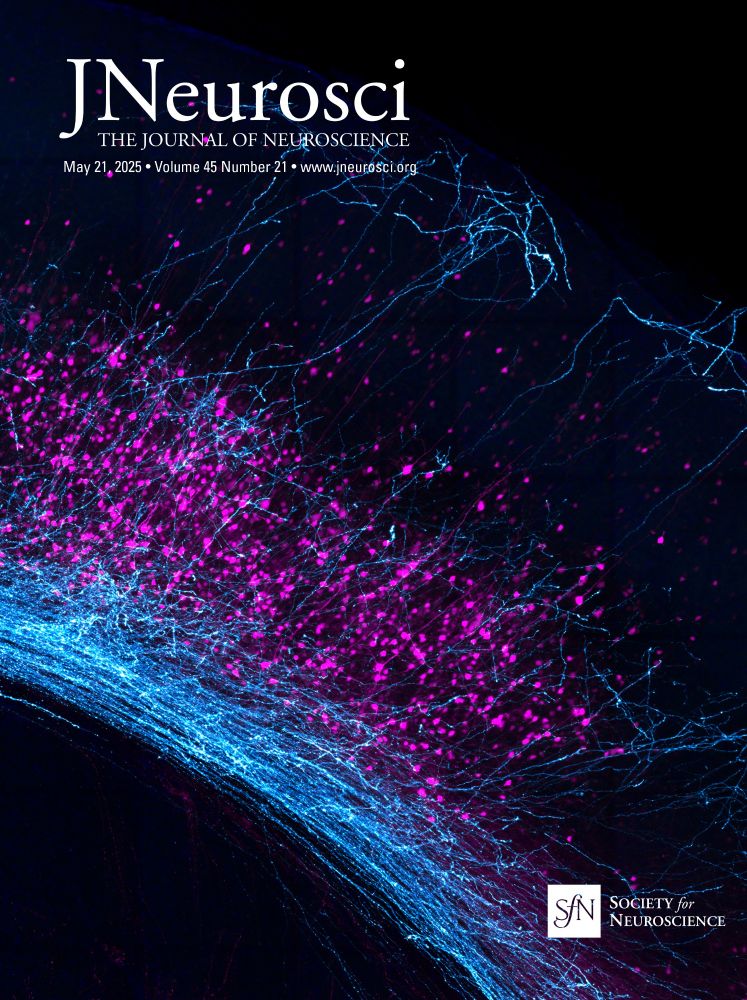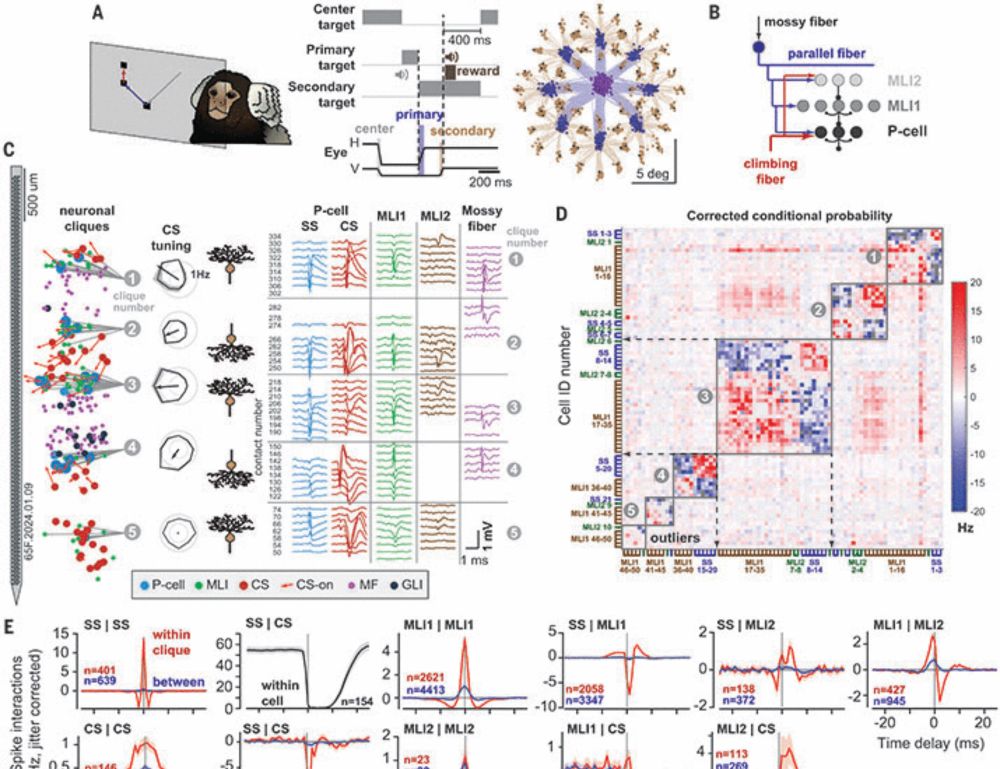Anyone know what happens with NIH deadlines during a government shut down??
30.09.2025 23:28 — 👍 0 🔁 0 💬 2 📌 0

Interested in doing a Ph.D. to work on building models of the brain/behavior? Consider applying to graduate schools at CU Anschutz:
1. Neuroscience www.cuanschutz.edu/graduate-pro...
2. Bioengineering engineering.ucdenver.edu/bioengineeri...
You could work with several comp neuro PIs, including me.
27.09.2025 20:30 — 👍 52 🔁 30 💬 1 📌 4
Congrats Thomas!
17.09.2025 22:08 — 👍 0 🔁 0 💬 1 📌 0
Congrats! Looking forward to reading more carefully, but it sounds like this aligns closely with how I think about things!
15.09.2025 15:24 — 👍 1 🔁 0 💬 1 📌 0
Some journals are claiming that you need to pay big $$ for gold open access to comply with NIH's new public access policy. FYI that is total bs. You can comply by depositing the Accepted Manuscript into PubMed Central on the Date of Publication without embargo. Pass it on.
26.07.2025 00:52 — 👍 122 🔁 64 💬 6 📌 5
See you soon!
05.07.2025 09:28 — 👍 1 🔁 0 💬 0 📌 0
Please reach out if you want help with these probes. I benefited immensely by having early access to them, and so I feel an obligation/responsibility to help others adopt the tech. And, stay tuned for open-source hardware/software for a motorized microdrive to lower these (and other) probes!
23.06.2025 20:09 — 👍 1 🔁 1 💬 0 📌 0
Finally out! I've been using these probes for a few years and they have been truly transformative for us. The core experiments of my lab are based around them.
23.06.2025 21:05 — 👍 17 🔁 2 💬 0 📌 0
Please reach out if you want help with these probes. I benefited immensely by having early access to them, and so I feel an obligation/responsibility to help others adopt the tech. And, stay tuned for open-source hardware/software for a motorized microdrive to lower these (and other) probes!
23.06.2025 20:09 — 👍 1 🔁 1 💬 0 📌 0

Large-scale high-density brain-wide neural recording in nonhuman primates - Nature Neuroscience
Neuropixels 1.0 NHP is a 45-mm, high-density silicon probe capable of recording large numbers of neurons with single-neuron resolution from most areas in a macaque’s brain.
Our paper on NHP neuropixels is finally out in Nat Neuro! These probes have already been transformative and will usher in a new era of primate neuroscience. I am extremely proud to have played a very small role in this project. I can't wait to see what our community discovers. tinyurl.com/54u3hrj8
23.06.2025 19:31 — 👍 64 🔁 11 💬 1 📌 2
This is amazing.
13.06.2025 09:57 — 👍 1 🔁 0 💬 0 📌 0
A reminder that the deadline for this is coming up! Please spread the word/repost!
20.05.2025 16:15 — 👍 1 🔁 1 💬 0 📌 0
These charlatans seem to outdo their stupidity every single day.
29.05.2025 13:54 — 👍 0 🔁 0 💬 0 📌 0
The deadline for this is ⏰THIS SATURDAY!⏰ Please consider applying and share your science with the MIT BCS community!🧠
27.05.2025 22:10 — 👍 8 🔁 3 💬 1 📌 0
 22.05.2025 22:55 — 👍 335 🔁 84 💬 4 📌 7
22.05.2025 22:55 — 👍 335 🔁 84 💬 4 📌 7
A reminder that the deadline for this is coming up! Please spread the word/repost!
20.05.2025 16:15 — 👍 1 🔁 1 💬 0 📌 0
No, I mean your brain! We have some neural data and we're trying to understand how it relates to behavior. That's the process that is severely under constrained.
18.05.2025 21:38 — 👍 1 🔁 0 💬 1 📌 0
How are the subspaces defined? How do you know whether or not trajectories are moving through a null space with regard to the output? You still have to make assumptions about how neurons are combined/what signals are relevant to behavior/computation.
18.05.2025 21:05 — 👍 1 🔁 0 💬 1 📌 0
The manifold view (in its purest form) would miss this organizing principle entirely. One reason is because it doesn't actually define what a "population" is, beyond whatever neurons you happen to record from. Then, all bets are on for how this "pop." is linked to behavior. DOF = # of neurons.
18.05.2025 18:54 — 👍 2 🔁 0 💬 1 📌 0
An example where we've done this successfully is the primate visual system, where the receptive field of a neuron is informative about how it is combined downstream. I.e. there's a relationship between functional properties and connectivity that is critical to how we analyze and interpret data.
18.05.2025 18:54 — 👍 0 🔁 0 💬 1 📌 0
Not sure I agree re: manifolds, beyond it being trivial that structured connectivity will lead to the observation of manifolds. More important to identify the organizing principles of the system that constrain the link between brain & behav. In most cases this link is severely underconstrained.
18.05.2025 18:54 — 👍 3 🔁 0 💬 2 📌 0
Some examples:
www.science.org/doi/full/10....
www.jneurosci.org/content/29/2...
elifesciences.org/articles/67258
www.biorxiv.org/content/10.1...
18.05.2025 18:26 — 👍 1 🔁 0 💬 1 📌 0
Agreed. IMO, the key question is how much flexibility does the brain have to extract information that is present in the population activity? For a variety of reasons, I think this read-out is highly constrained, and so the brain figures out solutions that are robust and generalizable.
18.05.2025 18:03 — 👍 4 🔁 1 💬 1 📌 0
Many approaches assume precise control over how single neurons are combined. The "cost" of this mechanism seems high. If the brain can organize things such that random weights get you pretty far, I think that's an easier/more robust solution. I think this is one reason why topography is everywhere.
18.05.2025 18:15 — 👍 7 🔁 2 💬 1 📌 0
Many approaches assume precise control over how single neurons are combined. The "cost" of this mechanism seems high. If the brain can organize things such that random weights get you pretty far, I think that's an easier/more robust solution. I think this is one reason why topography is everywhere.
18.05.2025 18:15 — 👍 7 🔁 2 💬 1 📌 0
Agreed. IMO, the key question is how much flexibility does the brain have to extract information that is present in the population activity? For a variety of reasons, I think this read-out is highly constrained, and so the brain figures out solutions that are robust and generalizable.
18.05.2025 18:03 — 👍 4 🔁 1 💬 1 📌 0
I have the opposite intuition: A highly specific, highly-trained task is exactly the case where the brain could learn a task-specific, optimal decoder. In natural settings, a task-general decoder is more likely (and would thus appear suboptimal for any single task.).
18.05.2025 14:55 — 👍 8 🔁 1 💬 3 📌 0
Always seemed strange that this result is typically no longer taken seriously when thinking about how activity is decoded. Of course, @marlenecohen.bsky.social's group and others have done amazing work expanding on this though. All-in-all, lots of evidence that the read-out is highly constrained.
17.05.2025 19:48 — 👍 2 🔁 1 💬 0 📌 0
Incoming Asst. Prof of Psych & Brain @ WashU starting 1/26 | postdoc @ MIT & PhD @ UofToronto | Attention, Learning, Episodic Memory, Developing Brain
The CIAN mobilizes research to address health, education, industry, and other applications important for the global community.
Neuroscientist, Assistant Professor at Emory University www.muruganlab.com
Postdoc in Uchida Lab, Harvard (dopamine, learning, circuit computation) | PhD in Giocomo lab, Stanford (grid cells, path integration, navigation) | NIH NIDA K99/R00 | Bridging theory and biology of animal learning and decision making
Computational/theoretical neuroscientist; asst. prof. at CU Anschutz (July 2025): https://www.necolelab.com/members/laureline-logiaco.html
Particular interest in how mammalian brain regions specialize and synergize to generate hierarchical behaviors.
Postdoc in Computational Neuroscience, PhD in Robotics from the University of Washington. Musician/composer. I love anything brains and music theory. He/him. https://jisacks.github.io/
Neuroscientist, Sestan Lab @yaleneuro.bsky.social, Brain Development and Evolution, Human-Specific Features, #Cerebellum, Pluripotent Stem Cells, #iPSC, Individual Variation
Neuroscientist and Research Director @CNRS. «Orientation&Coordination» team. Head direction, interneurons, memory. Saints-Pères, Paris 👩🔬🧠
K. Lisa Yang Brain-Body Center Postdoctoral Fellow at Steve Flavell's Lab @Picower Inst, MIT | PhD from Michael Hendricks' Lab @IPN, McGill Univ | Animal behavior | Neuroscience | Open science
Assistant Prof. Princeton Neuroscience Institute. Neural dynamics, hormones, behavioral quantification. Understanding the world, one fighting mouse at a time.
www.falknerlab.com
into brain evolution & development, open science, art & science https://www.youtube.com/watch?v=6hMNZHsrNHw, music, making, javascript, contemporary dance https://www.youtube.com/watch?v=OZfHj7F2FzQ
website: katjaq.github.io
Discoveries and developments from the Princeton Neuroscience Institute.
Explore our website 🏠: pni.princeton.edu
Read recent research stories 📰: linktr.ee/princetonneuro
Join our newsletter 📬: http://eepurl.com/iTAKzI
Vision Science | Systems & Computational Neuroscience
Neuroscience postdoc, Jane Coffin Childs Fellow, Falkner Lab @ Princeton| Interested in hormones, brain & behavior| PhD @ Harvard| BTech @ IIT Madras| Stories of WiN🎙️| https://scholar.google.com/citations?user=Ql5Nm9UAAAAJ&hl=en&oi=ao
Health Equity Scientist, Bethesda Declaration Co-signer, working at NIH but speaking in my personal capacity. (AP Photo/Jose Luis Magana)
Civil servants stand up! https://linktr.ee/declarationsofdissent
Neuroscience, engineering, AI, music. Asst. Professor / PI at University of Montréal and Mila.
Neuroscience Professor at Mount Sinai, into the science of squad goals.
https://www.wulab.bio/



 22.05.2025 22:55 — 👍 335 🔁 84 💬 4 📌 7
22.05.2025 22:55 — 👍 335 🔁 84 💬 4 📌 7
